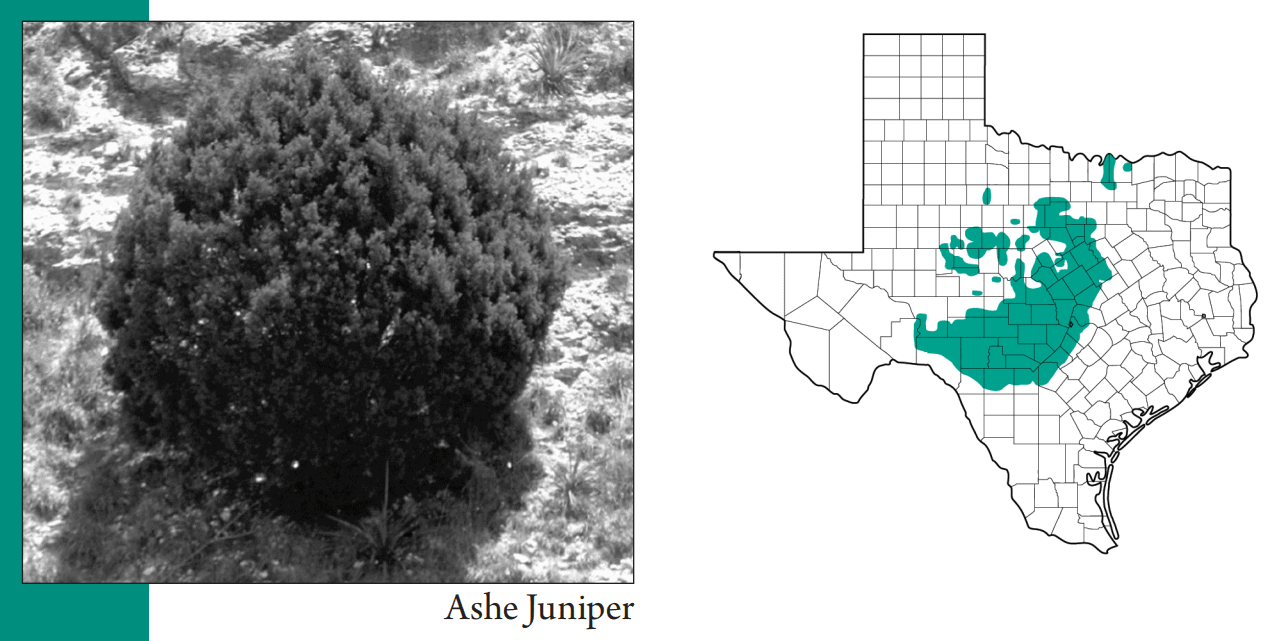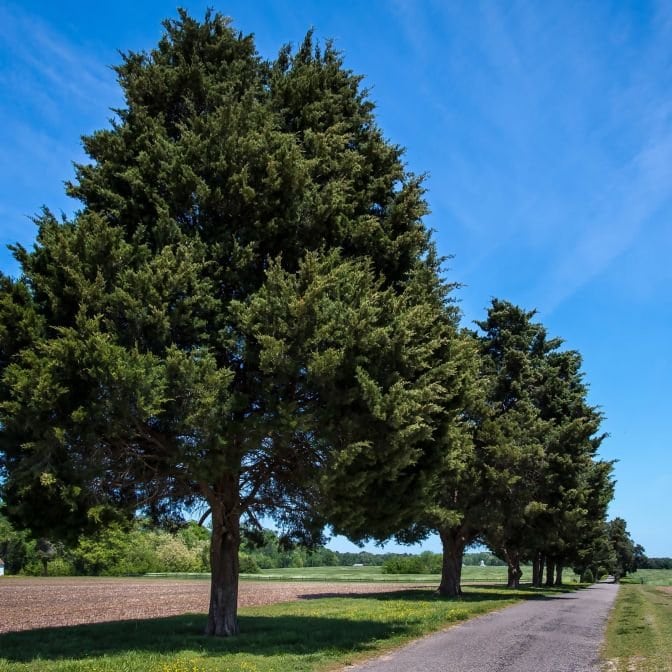I remember when I first moved to Texas I was out on a ranch with the TCU Ranch Management class and the professors kept on referring to brush management control measures for “Cedar” trees. Not wanting to look dumb and feeling like I was the only one who had no idea what this professor was talking about I kept my mouth shut taking notes on something I had no idea about. A few days later I realized that these so called Cedar trees my classmates and professors were talking about were just Juniper trees and I actually knew exactly what they were talking about.
Up north in my home state of Oregon we all call them Juniper trees and use them for firewood as a way to efficiently keep our houses warm on those cold Oregon days. I remember stacking wood every year with my dad not knowing anything more than it was a Juniper tree and it burns hot. However, that is not the case any more as through the years and my education I have been able to learn a few things about these things that dot the Texas lands.
Background
Juniper trees actually make up a large genus of coniferous trees that contain several Specimens that bear the common name “Cedar” (Sciencing.com) What we know as Junipers or Cedar trees depending on where at in North America you are at all have a common link of of aromatic wood; Juniper trees give off a strong and recognizable smell when burned or freshly cut. In addition, to burning extremely hot as compared to other local wood options and thus makes this a favorite choice when looking for wood to heat your home or to smoke a brisket on.
Texas Junipers
All together there are six different types of Juniper trees in the State of Texas however, only three of those are considered “Major” and are problematic. Ashe Juniper, Red Berry and Eastern Red Cedar
Ashe Juniper (Blue berry Juniper Trees)
https://agrilifeextension.tamu.edu/library/ranching/juniper-biology-and-management-in-texas/ 
Also known as Mountain Cedar or Post Cedar these trees produce a blue berry and are one of the three major types of Cedar trees here in Texas. What is unique about Ashe Juniper is the fact that they are non re- sprouting meaning if you take a chainsaw and cut the tree at the base the cedar will not grow back and will be dead. This is helpful when utilizing brush control measures as knowing if you need grub the tree out from the root or if you are able to only use a chainsaw. Ashe Juniper release pollen from December to February while the berries develop all year long and until November and disperse from November to April. Ashe juniper trees begin producing berries around 4 ft. tall and can produce 100,000 to 250,000 berries each year. Berries will ripen at the same time on a tree but will happen at different times from tree to tree. Ashe Juniper typically has a single trunk and typically reach a height of 15 to 30’ making them larger than Red Berry Juniper Trees.
Redberry Juniper Trees (Known in Texas as Cedar)
https://agrilifeextension.tamu.edu/library/ranching/juniper-biology-and-management-in-texas/ 
Typically in Texas when someone refers to a Cedar tree they are talking about the Redberry Juniper tree and of the six species of juniper trees found in Texas this is the bad boy of the group. What is uniquely frustrating about this species of Juniper is the fact that it is re sprouting meaning in order to remove the tree pernamently the tree must be grubbed up out of the ground using extensive machinery; simply cutting it off at the base will only cause the tree to grow back unlike Ashe Juniper. Red Berry Juniper trees have a multi-stemmed and sprouts from a bud zone underneath the ground. Additionally, red cedar is known to be more irregular in shape and typically grow less than 15 feet while reaching maturity at 12 feet.
Eastern Red Cedar
https://agrilifeextension.tamu.edu/library/ranching/juniper-biology-and-management-in-texas/

Eastern Red Cedar is primarily found east of I 35 in Texas and is typically a much larger stature of a tree. Eastern Red cedar are typically very dense and are more cone shaped more than globed shaped. Like Ashe Juniper these trees are non resprouting meaning you do not have to grub them up out of the ground in order to remove the plant; additionally they produce blue berries. Eastern Red cedar are also know to be some of the best foliage and cover for animals and make excellent fence posts or for use in decorative means and in the image.
Summary
Although juniper trees may look alike, distinguishing them apart from each other not only helps in brush control measures but also in knowing what you can use the tree for on your property. In addition to looking smart in front of your friends when you can correctly name and describe an Eastern Red Cedar vs a Red cedar. As I said all together there is about six species of juniper trees in the State of Texas however the three described above are the ones of major concern and most likely to show up on a game show. Quick math is if it has a red berry and multiple stems its best to grub it out of the ground, if it has blue berries you can safely assume you can cut it off at the base without it resprouting.
